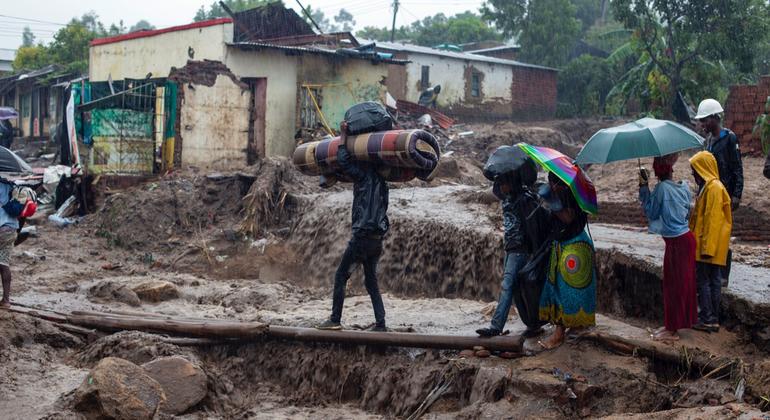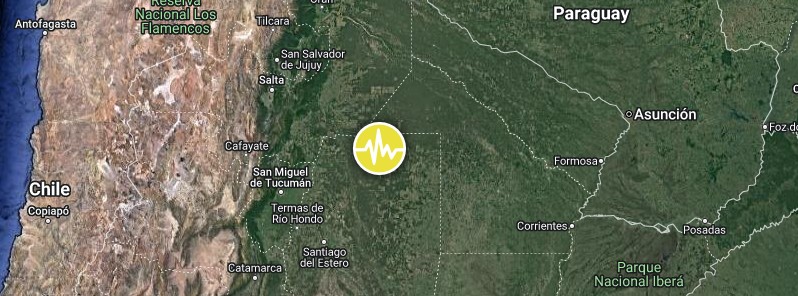For Malawians, Cyclone Freddy was an unmitigated disaster. In March this year, the storm ripped through the African country twice during its record-breaking month-long destructive rampage through southern Africa.
The unprecedented duration of the extreme weather event would have been difficult for any country to deal with, but for Malawi, one of the most vulnerable developing nations in the world, it was devastating. Hundreds were killed, more than half a million people were displaced, and thousands of hectares of crops were washed away.
As of early April, hundreds of people remained missing, and some 1.1 million people were in need of humanitarian support. The severe storm hit during Malawi’s worst cholera outbreak in two decades, adding to the pressures on a health system that was already severely stretched.
That same month, a group of independent UN rights experts called for more humanitarian aid, but also for Malawi to “develop durable solutions to avert, minimize, and address disaster displacement through climate adaptation measures, preparedness and disaster risk reduction.”

A woman is tested for COVID-19 in Shenzhen, China.
More severe, costly, and deadly disasters
The impact of Freddy is just one example of the growing number of complex and costly disasters affecting increasing numbers of people, that prompted 187 countries to sign up to an international disaster risk reduction agreement in 2015.
The Sendai Framework, named after the Japanese city in which it was adopted, is an international UN agreement designed to reduce disaster losses. It targets substantially fewer deaths from disasters, a reduction in the disaster damage to infrastructure, and improved early warning systems – all by 2030.
However, eight years on, little progress has been made: according to the UN Office for Disaster Risk Reduction (UNDRR), there has been an 80 per cent increase in the number of people affected by disasters since 2015. What’s more, UNDRR finds that many of the lessons from past disasters seem to have been ignored.

An eight-year-old girl stands near a school destroyed by floods in Quetta, Pakistan.
Half-time report
From 18 to 19 May, a High-Level meeting at UN Headquarters in New York will provide an opportunity to lay out the many challenges that have stalled progress, and chart a course towards a safer world.
Delegates at the event will have pored over the report of the Midterm Review of the Framework’s implementation, which lays bare the scale of the problem. Released in April to mark the half-way point between the launch of the Framework and the 2030 deadline, it does not make for comfortable reading.
The report emphasizes the growing impacts of climate change since 2015, and the brutally unequal consequences, which are much more severe in developing countries; a case in point is the flooding in Pakistan in 2022, which affected more than 33 million people and damaged millions of acres of agricultural land, causing widespread food insecurity.
The growing interconnectedness of the world’s societies, environments, and technologies means that disasters can spread extremely quickly. The report points to the COVID-19 pandemic as a prime example, beginning as a local outbreak in China in 2019, before rapidly spreading around the world, leading to the death of some 6.5 million people by the end of 2022.
“One doesn’t have to look hard to find examples of how disasters are becoming worse’” says Mami Mizutori, Special Representative of the UN Secretary-General for Disaster Risk Reduction and head of UNDRR. “The sad fact is that many of these disasters are preventable because they are caused by human decisions. The call to action of the Midterm Review is that countries need to reduce risk in every decision, action, and investment they make.

Less than half of the Least Developed Countries and only one-third of Small Island Developing States have a multi-hazard early warning system.
Countries taking the lead
Clearly, not enough is being done: the costs of disasters continue to rise, but funding for disaster risk reduction is not going up at anywhere near the rate needed to tackle them.
Nevertheless, as the report shows, there are many examples of countries, at a national level, putting plans in place to protect their citizens from the risk of disasters.
To date, disaster preparedness plans have been enacted in 125 countries. They range from legislation in Costa Rica that allows all institutions to allocate budgets for prevention and emergency response, to Australia’s Disaster Ready Fund, which will invest up to A$200 million per year from 2023 – 2024 in disaster prevention and resilience initiatives, and Barbados’s disaster clauses that allow for debt to be immediately frozen in the event of an economic impact caused by disaster.
And, whilst the number of people affected by disasters is going up, the proportion being killed has more than halved. The disaster-related mortality rate in the decade 2005-2014 was 1.77 per 100,000 global population, and in the decade 2012-2021 it had dropped to 0.84 (barring the impact of COVID-19).
The recommendations in the Mid-Term Report, and the measures being taken at a national level will form the basis of the discussions at the High-Level Meeting: they contain proof that a safer world is achievable, between now and 2030, if the necessary investments in risk reduction are made.
Reducing the risk of disasters at the UN
-
The UN Office for Disaster Risk Reduction (UNDRR) helps decision makers across the globe better understand and change their attitude to risk.
-
UNDRR’s authoritative expertise and presence in five regional offices is used to build and nurture relationships with national and local governments, intergovernmental organizations, civil society and the private sector.
-
The Office collects, collates, and shares the latest high quality technical information and data about reducing risk and building resilience more effectively. Hundreds of experts work in UNDRR’s science and tech advisory groups, essential partners for governments and other stakeholders all over the world.
-
The development and roll-out of inclusive and accessible multi-hazard early warning systems is a key part of their work. Such systems save lives: on average, when disaster strikes, fatality rates in countries without them are eight times higher than in countries that have put them in place.




